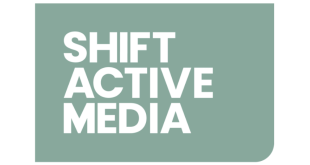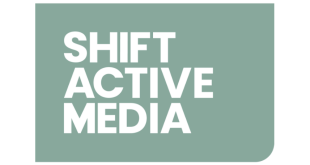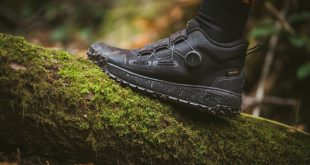Uplift is a mentoring programme to bring together female leaders in the cycling industry with the next generation of talent. Rebecca Bland looks at why this initiative is so important.
This piece first appeared in the December edition of BikeBiz magazine – get your free subscription here
In October, a new initiative aimed at pairing women in the cycling industry with mentors in senior positions across the globe launched.
Aptly named, Uplift, the brainchild of Rachael Burnside, business director at Shift Active Media, aims to provide women with support and empowers them to be more confident in their careers within the cycling industry and beyond.
Rehashing old stats about the cycling industry being male dominated isn’t always beneficial. Instead, looking forward and embracing not only the positive change that we’ve seen over the last few years, but also the new talent that is coming into the industry is where we as a whole will thrive.
Starting in October, more than 160 applications were whittled down and matched with 12 mentors (13 including Burnside).
These mentors came from a variety of senior cycling industry roles across the globe, including Ribble Cycles’s head of PR, Sasha Castling, who agrees that the initiative has come at a much needed time.

“It’s more important than ever, with the landscape changing. And it’s been very positive to see the increase in women entering the industry, which is why Uplift is so vital where we can help and support one another.
“I’m a strong advocate as well for social mobility in particular empowering women of all ages and promoting visibility, vision and voice. I think that’s really important – when we support one another, we all rise together. I think what Rachael has done brilliantly is allowing this to happen.”
The motivation behind creating the programme wasn’t to devalue any male presence in the meeting room or boardroom, but more to help give women the confidence to speak up in situations where it might be more beneficial to hear from a female perspective.
But for more women to even be in the room and speak up, the industry as a whole needs to enhance staff retention and become more flexible.
Burnside was fortunate enough to have her own mentor when she joined the cycling industry, and as more women joined not only her team but the industry as a whole, she decided it was time to set up a programme to benefit more women in cycling.
“We could see it post-pandemic that women’s cycling was growing, and that more women were pacing the halls at Eurobike or Sea Otter,” explained Burnside.

“And I thought actually, maybe we need to try and create something like this ourselves. I knew how valuable it was for me having had a mentor in a very male dominated business and so wanted to try and see if together we can create something ourselves.”
The mentors are not being paid for their time, but Burnside has been strategic in her pairing of mentors and mentees so that both parties can get something out of the relationship.
One thing that surprised Burnside when she launched the programme was the sheer volume of interest – particularly from women in senior positions.
“When we launched, I was surprised by the amount of other senior women that I didn’t know existed who got in touch and said they wanted to be mentors, which was amazing,” said Burnside.
“When I originally launched this, I thought that nobody would want to do this and dedicate time. But I’ve had about 10 people come to me after the fact and say they would love to be on the next programme, so there’s definitely an appetite for a phase two.”
Phase two of the programme is expected to begin early next year. Any women looking to volunteer in a mentor capacity or otherwise should get in touch with Burnside on rachael.burnside@shiftactivemedia.com.

But why is something like this so important for not only building up women in the industry, but also developing the industry as a whole?
Although the majority of cyclists may still be male, figures have shown, particularly during and since the pandemic, that women are interested in riding – especially when they can see that there are thoughtful products and attitudes that allow this.
“We all benefited during the pandemic with the brands that were built, businesses that were built,” continued Burnside. “And I think, now, this programme is very much about understanding, how do we tap into this audience of women who ride bikes and who will ride bikes?
“Some of the biggest brands are investing a lot of money in this, and they haven’t pulled back – Zwift haven’t stopped sponsoring the Tour de France Femme, Liv haven’t stopped investing in creating the bikes that they’re developing for women. This is very much for us all together, men and women, getting the right people in the room to help drive the conversation to help us tap into that.
“I wouldn’t sit in a room and pass comment on the perfect male saddle because I’m not in a position to do that. But I certainly would add value to talking about the right fit of a jersey for women to make women feel more comfortable. Together, the opportunity is there so let’s make sure we’ve got the right product for the people that want to buy it. Let’s make sure we’re communicating to them in the right way.”

Retaining women in the cycling industry means the working environment may need to be slightly more flexible, with maternity pay options, and even things like team building exercises – not everyone, men included, want to go out and ride really hard for two hours on a road bike.
By making small changes to the working environment, more women will be enticed into joining the industry, and crucially, staying and progressing.
“Even if you can just educate your colleagues, it just adds more value to your business,” added Castling. “If we can make this more of an equal playing field, make people aware of all the issues that people have to deal with, from childcare all the way to menstrual cycles and menopause, for example, it’s really important. And I think that’s where women really do add value.”
The cycling industry has taken a hit in recent years with well documented supply chain issues among others, but, there is still fantastic work being done by remarkable women throughout the sector.
And if there’s anything we should focus on, it’s that women’s cycling is growing, and it can thrive with the right people in the right positions to enable that growth.
Programmes like Uplift aren’t going to solve everything, and not every woman will feel the need to utilise something like this – but, the fact that it is there and it has gone from concept to creation means the appetite is there, and tens of women will now benefit from Burnside’s hard work for months (and we hope years) to come.
 BikeBiz Bicycle and cycling retail news
BikeBiz Bicycle and cycling retail news




